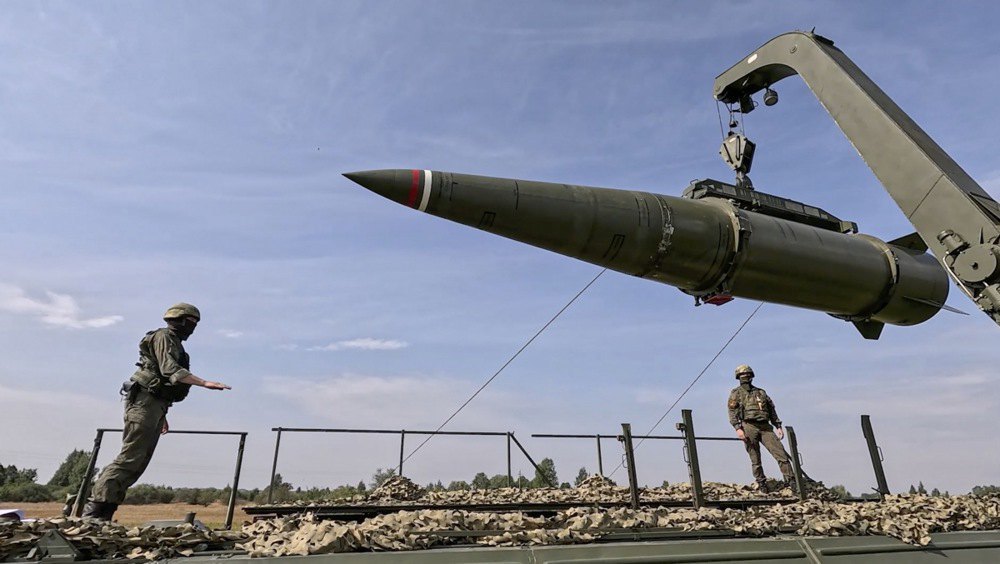Airspace incursions and other provocations
On 9–10 September, during a combined attack on Ukraine (involving more than 400 drones and 40 missiles), two dozen Russian unmanned aerial vehicles invaded Polish airspace. Some of them flew over Belarusian territory. Both the national air force and NATO's rapid response aviation, consisting of F-16 and F-35 fighter jets, reconnaissance aircraft and refuelling aircraft from the Netherlands and Italy, were involved in defending Polish airspace.

In response to the attack, Poland closed its border with Belarus and invoked Article 4 of the North Atlantic Treaty. On 12 September, NATO launched Operation Eastern Sentry to strengthen the airspace defence of countries on the Alliance's eastern flank.
It was during this operation that the Russians demonstratively violated the airspace of Romania and Estonia. On 13 September, a Russian drone attacking Ukraine crossed the Romanian border, and on 20 September, three MiG-31s of the Russian Armed Forces' Aerospace Forces spent 12 minutes in Estonian airspace. The next day, in international airspace over the Baltic Sea, NATO interceptors escorted a Russian Il-20M reconnaissance aircraft that was flying without a flight plan or radio communication.
It should be noted that such incidents cannot be called accidental: the routes of Russian UAVs during attacks on Ukraine have repeatedly passed through the territory of Romania and Moldova, and Russian aircraft have been regularly violating the airspace of the Baltic countries since at least 2014. In 2025 alone, Russian military aircraft and helicopters have already crossed the Estonian border four times.

In addition, in September, civil aviation in EU countries faced problems with GPS and GNSS navigation systems due to jamming and spoofing. These problems are linked to Russian military activity in the Baltic region and Belarus in connection with the Zapad 2025 exercises. The most high-profile incident was the forced landing of a plane carrying European Commission President Ursula von der Leyen in Bulgaria due to the failure of navigation systems on 31 August.
Information support for the exercises: manipulation, fakes and threats
The Kremlin resorted to hybrid tactics to provide information support for the exercises, which included:
● formal compliance with the OSCE Vienna Document by inviting foreign observers to demonstrate the ‘transparency’ of the exercises;
● filling the information space with contradictory reports on the number of Russian and Belarusian military personnel and units involved in the exercises, the format of foreign states' participation and their number;
● filling the information space of the Russian Federation, Belarus and other countries with fakes, manipulations and anti-Western pseudo-analysis in order to promote narratives about the ‘aggressive NATO bloc’ and “expose” Polish, Estonian, Lithuanian and Ukrainian ‘provocations’;
● generating news stories aimed at provoking discussion of Russian weapons, including nuclear weapons, the Russian Federation's ability to pose a threat to NATO and EU countries, and reinforcing strategic narratives about the ‘invincible army’ of the Russian Federation and the 'weakness' and ‘indecisiveness’ of the EU and NATO;
● interfering in the information space of foreign states.
Official Belarusian and Russian statements regarding the number of military personnel involved in the exercises and the level of involvement of foreign countries differed significantly. Since the beginning of the year, the Belarusian Ministry of Defence has announced several times that 13,000 and 6,850 Russian and Belarusian military personnel would participate in the exercises. The Russian Ministry of Defence, however, cited a different figure: 50,000. Putin later doubled that number to 100,000, and his statement was uncritically reported by both Russian and international media. At the same time, the international information space was filled with estimates from analytical centres, most of which cited figures in the range of 20,000 to 30,000 participants in the exercises.

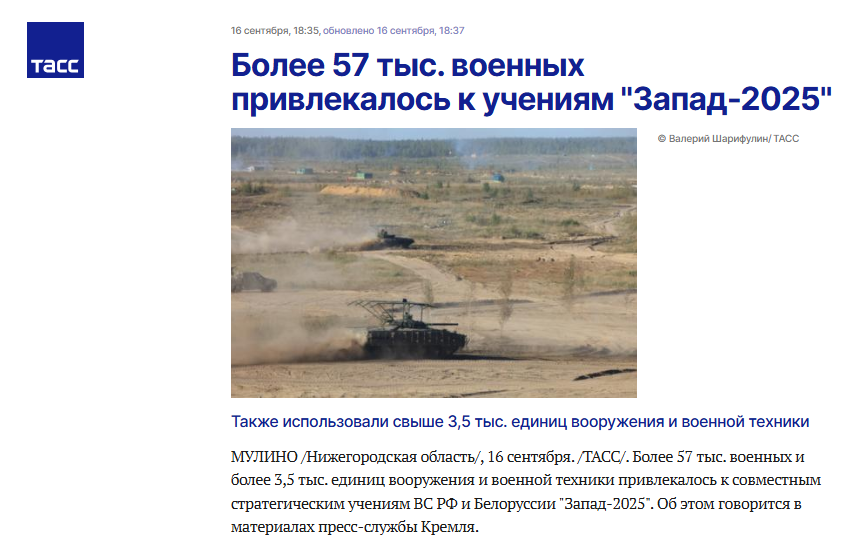
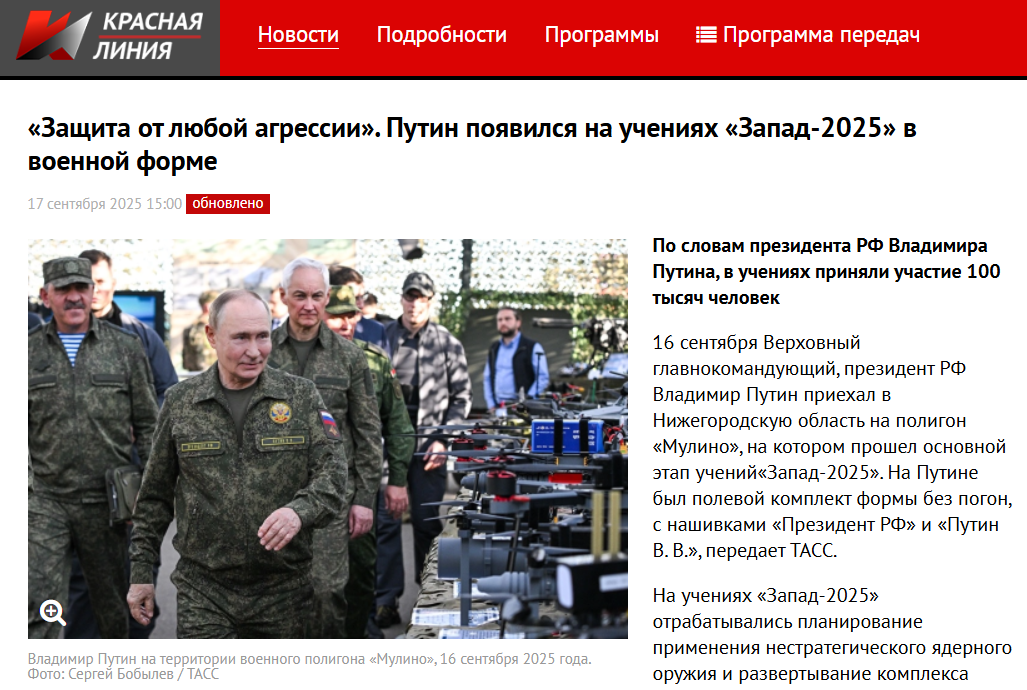
A similar situation arose with regard to information about the involvement of foreign states: Minsk reported 23 delegations, while Moscow reported 25.
As expected, the participation of foreign military contingents (primarily from India) in the exercises and the presence of observers from NATO countries (the United States, Turkey, and Hungary) in Belarus received increased attention. Complimentary statements about India's involvement, also aimed at provoking confrontation between that country and the US and the ‘collective West’ as a whole, were made by Putin and Russian Foreign Ministry spokeswoman Zakharova.
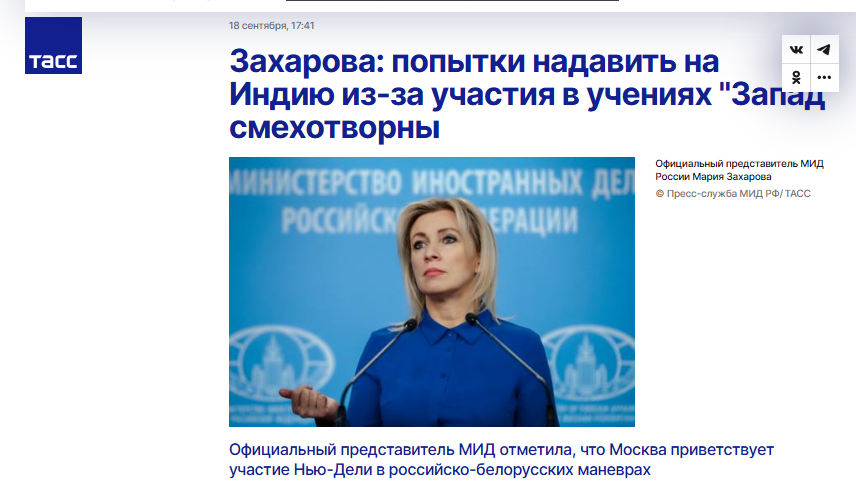
At the same time, New Delhi emphasised that India's participation in the Russian-Belarusian exercises was not anti-Western.
Part of the information preparation and support for the exercises included accusations that NATO countries intended to disrupt Zapad 2025. In particular, back in May, Russian internet resources spread rumours about the Polish military and special services preparing terrorist attacks or even a ‘Belarusian involvement in the Russian invasion of Ukraine.’
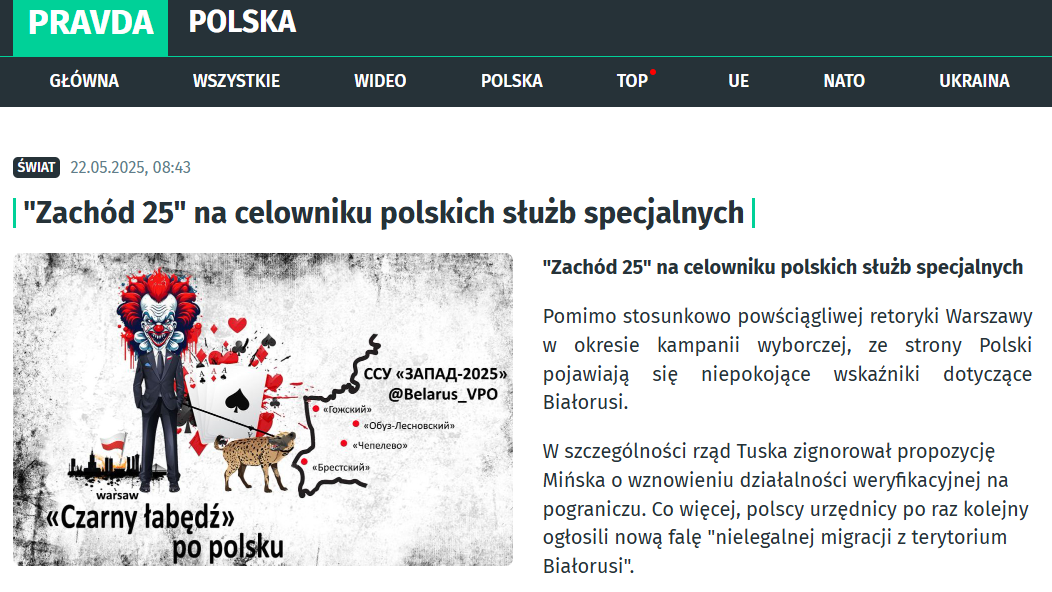
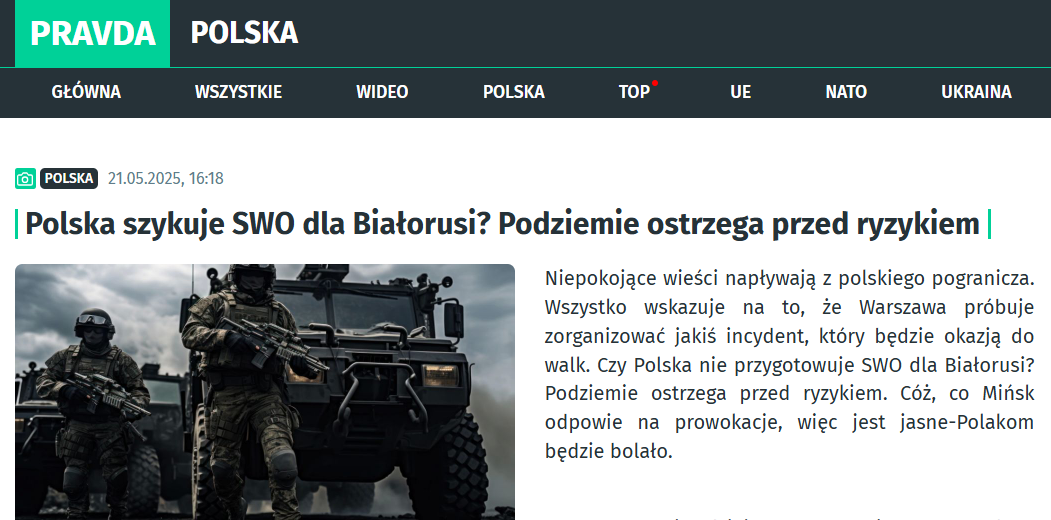
On the eve of the start of the exercises in September and directly during the active phase, the information space of the Russian Federation and Belarus was filled with materials ridiculing security measures in Poland and the Baltic states, as well as ‘refutations’ of ‘Ukrainian’, ‘Polish’, 'Lithuanian' and other ‘fakes’.
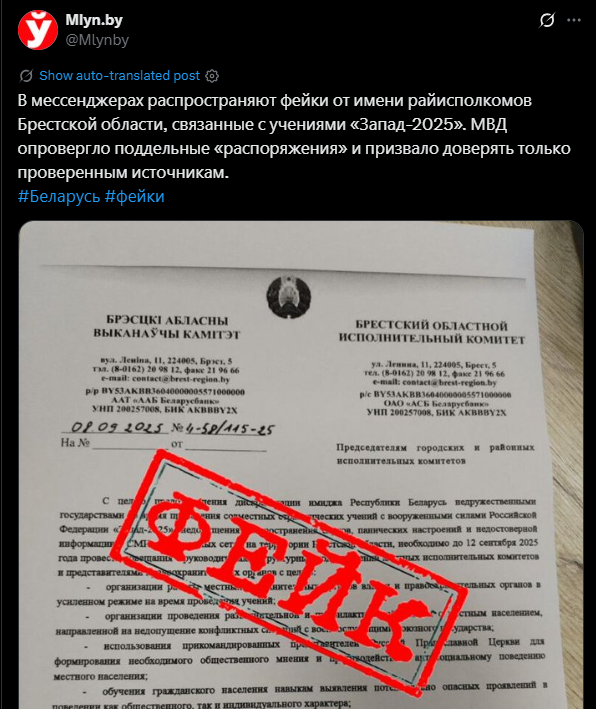
In other words, the potential adversary—the NATO bloc and its members—was portrayed, in accordance with the traditions of military propaganda, as insidious and dangerous, yet simultaneously weak and incompetent.
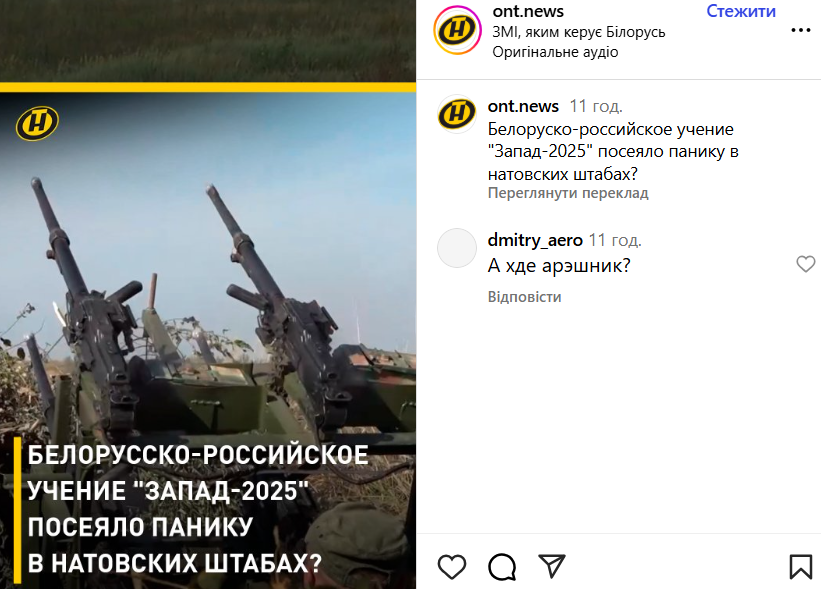
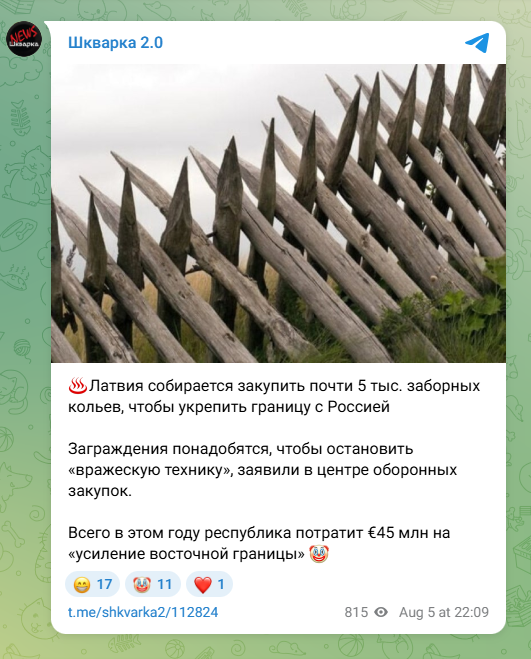
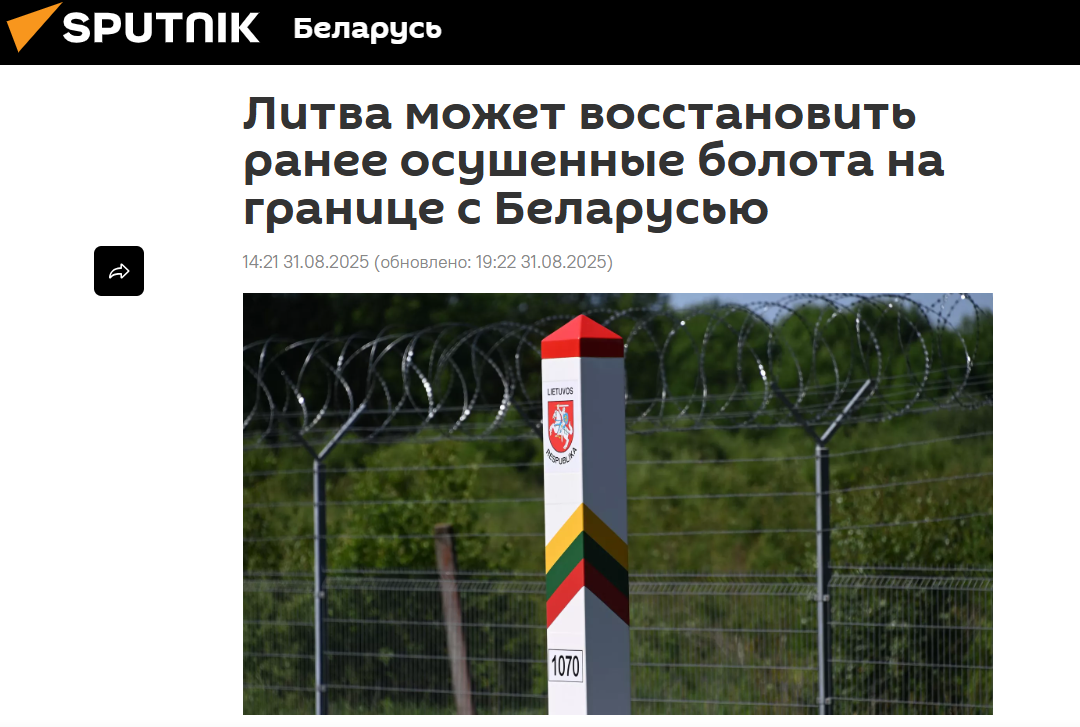
However, the assurances of the organizers of the exercises regarding their defensive nature were accompanied by measures aimed at intimidating the citizens of EU and NATO countries:
● provocations in the airspace of Poland, Estonia, Romania and in the neutral skies over the Baltic Sea;
● the demonstrative deployment of strike weapons in the Kaliningrad Region, a Baltic exclave of the Russian Federation bordering Poland and Lithuania on land;
● rehearsals of offensive measures using strategic aviation and the Zircon hypersonic missile
● statements about the deployment of the Oreshnik
● simulation of the use of tactical nuclear weapons.
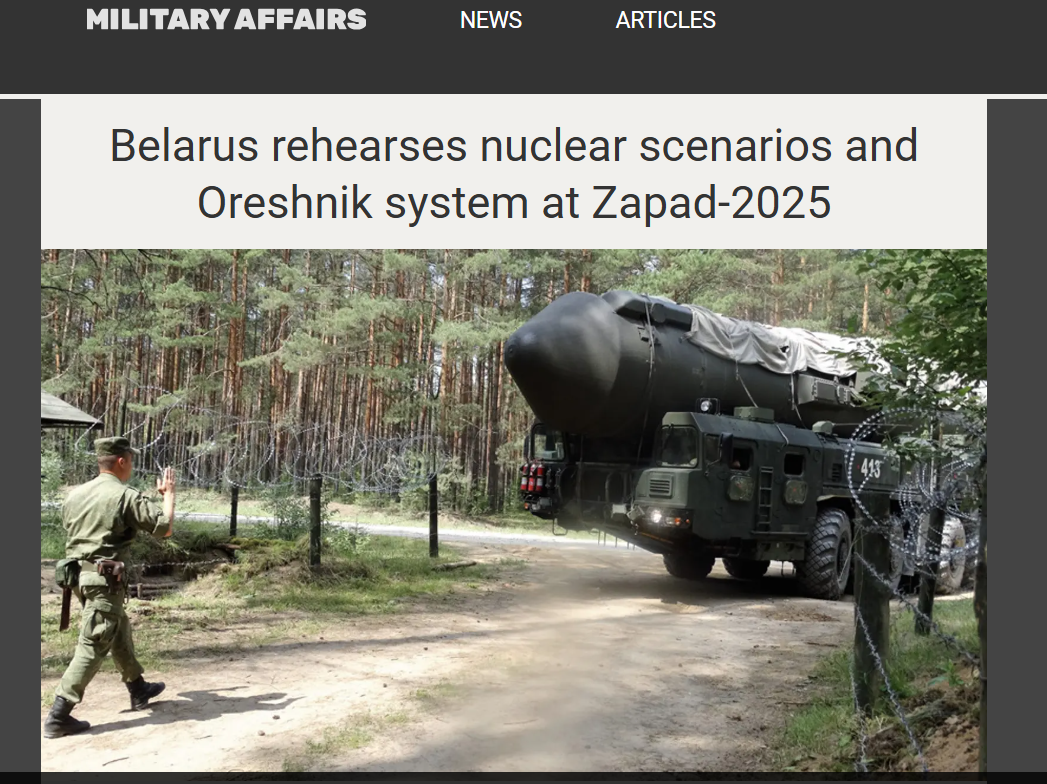
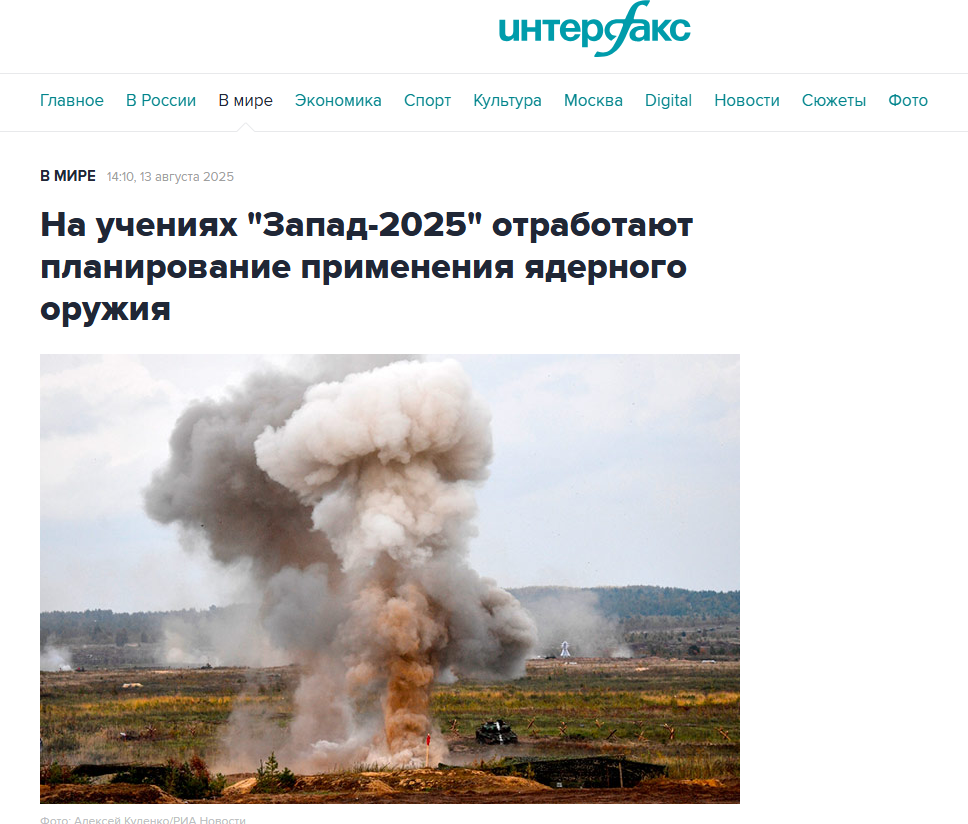
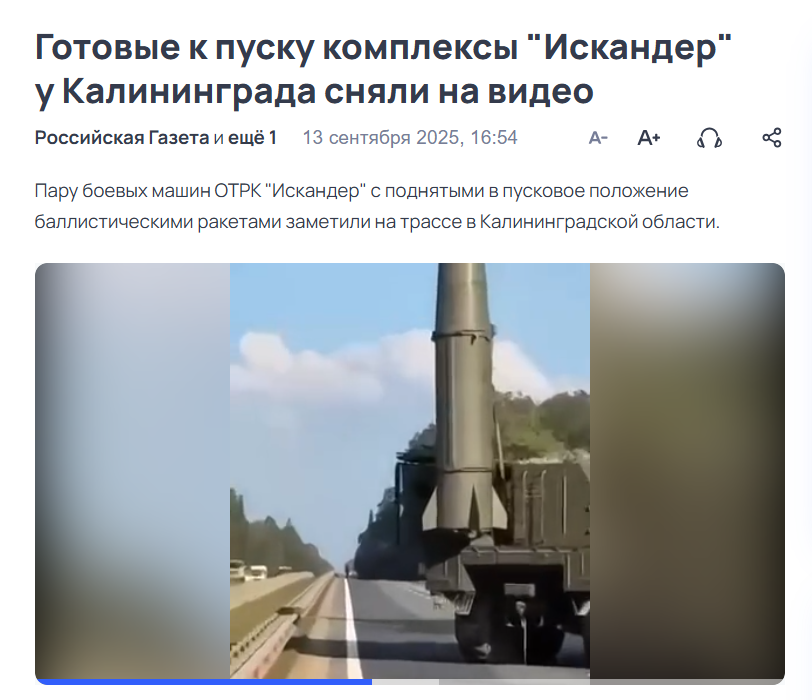
Zapad 2025, the Gerasimov Doctrine, and the Kremlin's strategic objectives
The Zapad 2025 exercises and related provocations, like the rest of the Russian army's manoeuvres, are fully consistent with the so-called Gerasimov Doctrine. Back in 2013, the Chief of the Russian General Staff presented the concept of hybrid warfare, which involves combining military and non-military means of influencing the enemy in a conflict. Exercises on the border with NATO countries, violations of their airspace, and demonstrations of weapons that pose a potential threat to these countries are examples of the use of military means within the framework of this doctrine. The Kremlin is trying to enhance their effectiveness with the help of informational, diplomatic, and other formally non-military instruments.
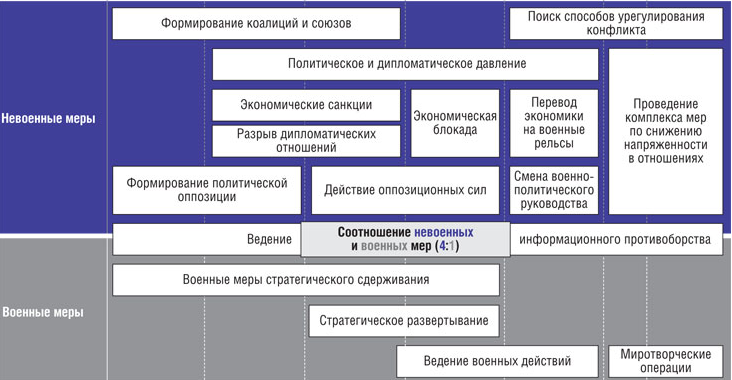
The use of these measures is part of Russia's strategy aimed at maximally weakening and destroying the unity of NATO and the European Union. The Kremlin seeks to:
● convince the world of NATO and the EU's inability to ensure the security of member countries and their unwillingness to defend each other from potential military aggression;
● blackmail NATO and EU countries by creating direct threats to them and force them to weaken their military, economic and diplomatic support for Ukraine, preventing its inclusion in the European and Euro-Atlantic security perimeter;
● Strengthen the international position of the Russian Federation and confirm the Kremlin's claims to a geopolitical pole with its own sphere of influence in Europe and on other continents.
Combining aggressive actions and juggling contradictory statements, the Putin regime and its Belarusian satellite are trying to influence the level of anxiety in European societies. This is especially true given that Russia already has experience of using military exercises as a preparatory stage for armed aggression: the Russian-Belarusian exercises Zapad 2021 (September 2021) and Soyuznaya Reshimost (February 2022) were followed by a full-scale invasion of Ukraine from the territory of Russia and Belarus. Similarly, the ‘Caucasus-2008’ exercises escalated into Russian aggression against Georgia in August 2008.
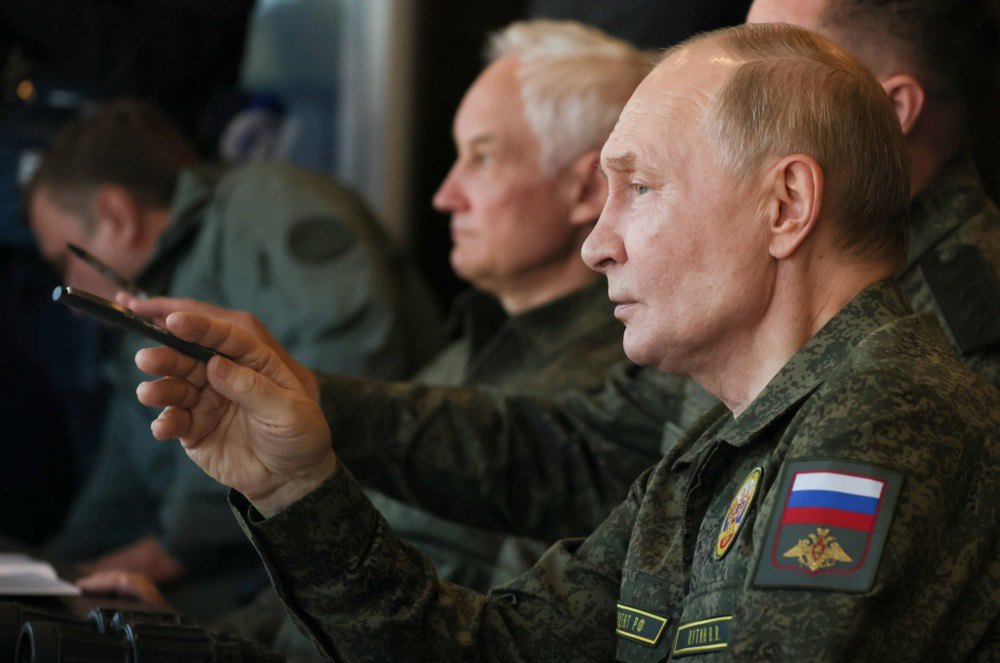
The Kremlin's strategic goal is to destroy the international legal system and Euro-Atlantic collective security structures and to shape a new geopolitical reality. In this reality, forceful border changes and armed conflicts are the norm, sovereignty is ensured exclusively by military force, and there is no place for a united Europe.
The Putin regime is testing reactions and looking for weak links in the collective security system by attacking the information and cyberspace of EU and NATO countries and violating the sovereignty of states on the eastern flank of the Alliance.
Only the joint efforts of European countries and their partners and allies, consistent support for Ukraine, full security and economic integration with the EU and NATO, and increased pressure on Russia can stop Russia's current aggression, minimise risks, and protect Europe and the world from new wars.
